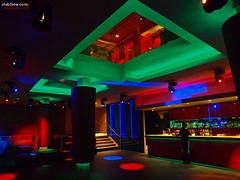Today's women go to extraordinary lengths to look beautiful. From hair care to plastic surgery, makeup to skin care -- we collectively spend billions of dollars to enhance our looks. We also invest countless hours collecting beauty tips from girlfriends, hairdressers, magazines and, yes, beauty websites to learn how to combat common beauty issues and to keep up with the hottest trends.
Skip to see the nine most horrifying beauty tips from history now.
But have you ever wondered what our great, great grandchildren or women of the future will think of our many beauty practices? Will they consider us insane for using hemorrhoid cream to de-puff eyes or mayonnaise to moisturize our hair? Will the beauty tips we prescribe to today seem totally archaic and ridiculous to future generations?
We ask this question after doing some research into the beauty practices of the past. We found some of the beauty tips from history to be absolutely horrifying in that they were so extreme they could cause nausea, seizures, nosebleeds and even death -- taking the whole "pain is beauty" mantra exceedingly literal. And what's probably even scarier is that these tips were considered to be totally "normal" at the time.
So peruse the nine scary beauty tips from the past and question what it is you do today that might make this list in 10 to 100 years time.
Red hair at any cost
During the reign of the great Queen Elizabeth (1558 to 1603), women of England were determined to mimic the Queen's royal red hair color and stopped at nothing to achieve it. Of course they didn’t possesses the hair dying technology of today as they resorted to concoctions of lead, quicklime, sulfur and water to dye their hair and wigs. This particular blend commonly caused nausea, headaches and regular nosebleeds. That's a high price to pay for some ginger hair if you ask us.
Wig maintenance
Wigs stayed in fashion for some time and by the 18th century it was the bigger (and more elaborate) the better. The royal courts were notorious for having the most ornate and sculpted wigs (think Marie Antoinette) and to sculpt these upper class, mile-high wigs they used lard to hold the hair sculptures firmly in place. Terrifyingly, the lard attracted lice and other vermin. Sometimes a cage was even set over the woman's head at night to keep the rats at bay.
Disguising disease
Women during the 15th to 17th centuries used tips from Renaissance "beauty pros" to disguise unhealthy complexions caused by diseases like smallpox. Tips suggested using white lead to create a fashionably white complexion and to cover any sores. The use of lead to powder the face poisoned and killed many, yet pale faces continued to be a huge trend. Some women in the sixth century even resorted to bleeding themselves to achieve that lovely alabaster glow.
Eye makeup
When it comes to lead or heavy metal poisoning for the sake of beauty, it's hard to beat the Egyptians. Both men and women wore Kohl (a mixture of soot and galena, a dark grey lead) and copper ore to color their eyes. They lined their lids daily with this mixture as it served spiritual and aesthetic purposes. In case you were wondering, low levels of lead exposure like this over a long period of time can cause seizures, coma, and death.
Hair removal
Before good old Nair, women and men of the renaissance removed unwanted hair with homemade depilatory creams containing severe abrasives like quicklime and arsenic to burn off unwanted hair. And we thought razor burn was bad?
Then, in the 1940's due to wartime scarcity, women used sandpaper to eliminate hair from their bodies -- buffing themselves "beautiful." Ouch.
Hair growth
Fat was the fad with the ancient Greeks. Rancid fat from human and animals as well as other nauseating substances (urine, menstrual blood, feces, amongst others) were said to treat everything from the common cold to baldness. Folklore has it that men used the fat of animals to make a paste and would slather it on to promote hair growth. C'mon, being bald isn’t that bad.
Red lips
If you wanted a luscious red pout back before easy, breezy, beautiful products were on shelves, you had a couple of options. You could act like an Egyptian, Cleopatra for that matter, and crush up some ants, add in some beetle blood and beeswax and be set for a hot night out. Or you could create a concoction of red clay, iron oxide (rust), henna, seaweed, iodine and bromine mannite.
Bromine mannite, if you are not familiar, is extremely poisonous. So much so that it could result in serious or fatal illness to both the woman wearing it and her makeout partner.
Anti-aging baths
Crocodile excrement was used in Ancient Greece and Rome for a variety of medicinal and beautifying purposes. They believed the reptile poop would dramatically slow down the aging process. So naturally, they filled their baths (fountains of youth?) with a mixture of crocodile feces and warmed mud and soaked for hours on end. Aristocrats were also known for making face masks out of the excrement. Even the Greek physician, Galen, noted that "ladies dedicated to luxury" preferred crocodile dung masks. While the "ick" factor is high on this one, at least no one was dying from it.
Cuticle remedy
Not all terrifying beauty tips come from ancient times, and proving it is the recent phenomenon of fish pedicures. Salon owners in Europe, China and Japan import "Doctor Fish," or Garra rufa, small fish belonging to the carp family, and let them feed on the dead skin cells of your feet. Who needs a pumice stone when you have fish to do the dirty work? It should be warned that regulators in many US states have banned fish pedicures for being unsanitary, since the same fish feed on many customers.
Source Anna Jimenez

 7:25 AM
7:25 AM
 Salsa Circuit
Salsa Circuit









 Posted in
Posted in























0 comments:
Post a Comment